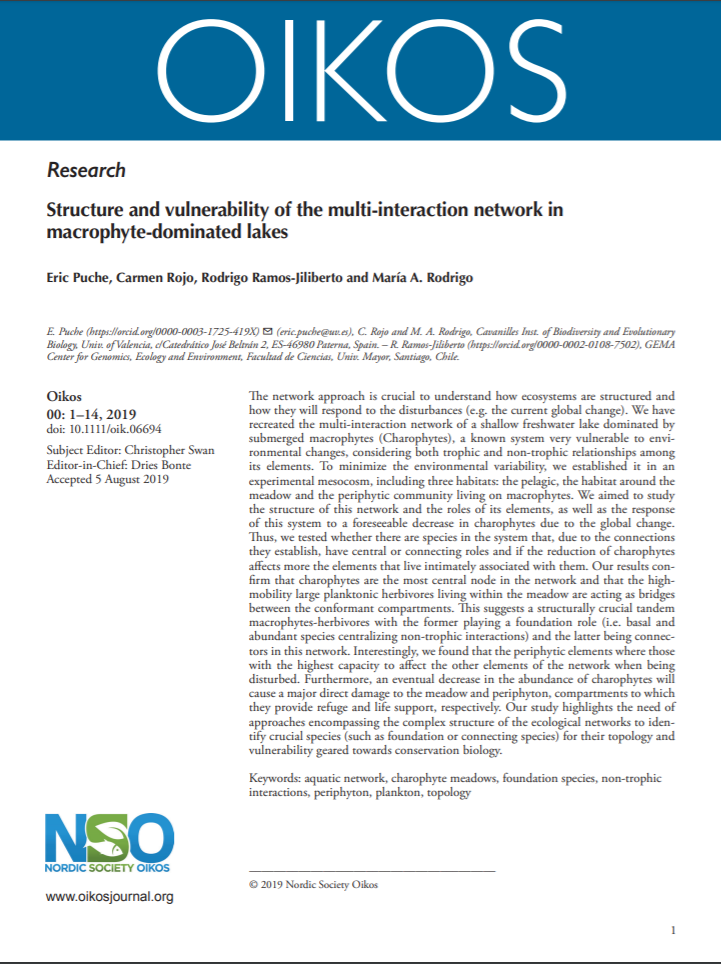Structure and vulnerability of the multi-interaction network in macrophyte-dominated lakes

Fecha
2020Autor
Ramos-Jiliberto, Rodrigo [Univ Mayor, GEMA Ctr Genom Ecol & Environm, Fac Ciencias, Santiago, Chile]
Puche, Eric
Rojo, Carmen
Rodrigo, María A.
Ubicación geográfica
Notas
HERRAMIENTAS
Acceda a títulos restringidos
¿Cómo descargar?Resumen
The network approach is crucial to understand how ecosystems are structured and how they will respond to the disturbances (e.g. the current global change). We have recreated the multi-interaction network of a shallow freshwater lake dominated by submerged macrophytes (Charophytes), a known system very vulnerable to environmental changes, considering both trophic and non-trophic relationships among its elements. To minimize the environmental variability, we established it in an experimental mesocosm, including three habitats: the pelagic, the habitat around the meadow and the periphytic community living on macrophytes. We aimed to study the structure of this network and the roles of its elements, as well as the response of this system to a foreseeable decrease in charophytes due to the global change. Thus, we tested whether there are species in the system that, due to the connections they establish, have central or connecting roles and if the reduction of charophytes affects more the elements that live intimately associated with them. Our results confirm that charophytes are the most central node in the network and that the high-mobility large planktonic herbivores living within the meadow are acting as bridges between the conformant compartments. This suggests a structurally crucial tandem macrophytes-herbivores with the former playing a foundation role (i.e. basal and abundant species centralizing non-trophic interactions) and the latter being connectors in this network. Interestingly, we found that the periphytic elements where those with the highest capacity to affect the other elements of the network when being disturbed. Furthermore, an eventual decrease in the abundance of charophytes will cause a major direct damage to the meadow and periphyton, compartments to which they provide refuge and life support, respectively. Our study highlights the need of approaches encompassing the complex structure of the ecological networks to identify crucial species (such as foundation or connecting species) for their topology and vulnerability geared towards conservation biology.
URI
https://doi.org/10.1111/oik.06694http://repositorio.umayor.cl/xmlui/handle/sibum/6398
https://onlinelibrary.wiley.com/doi/abs/10.1111/oik.06694
Coleccion/es a la/s que pertenece:
Si usted es autor(a) de este documento y NO desea que su publicación tenga acceso público en este repositorio, por favor complete el formulario aquí.